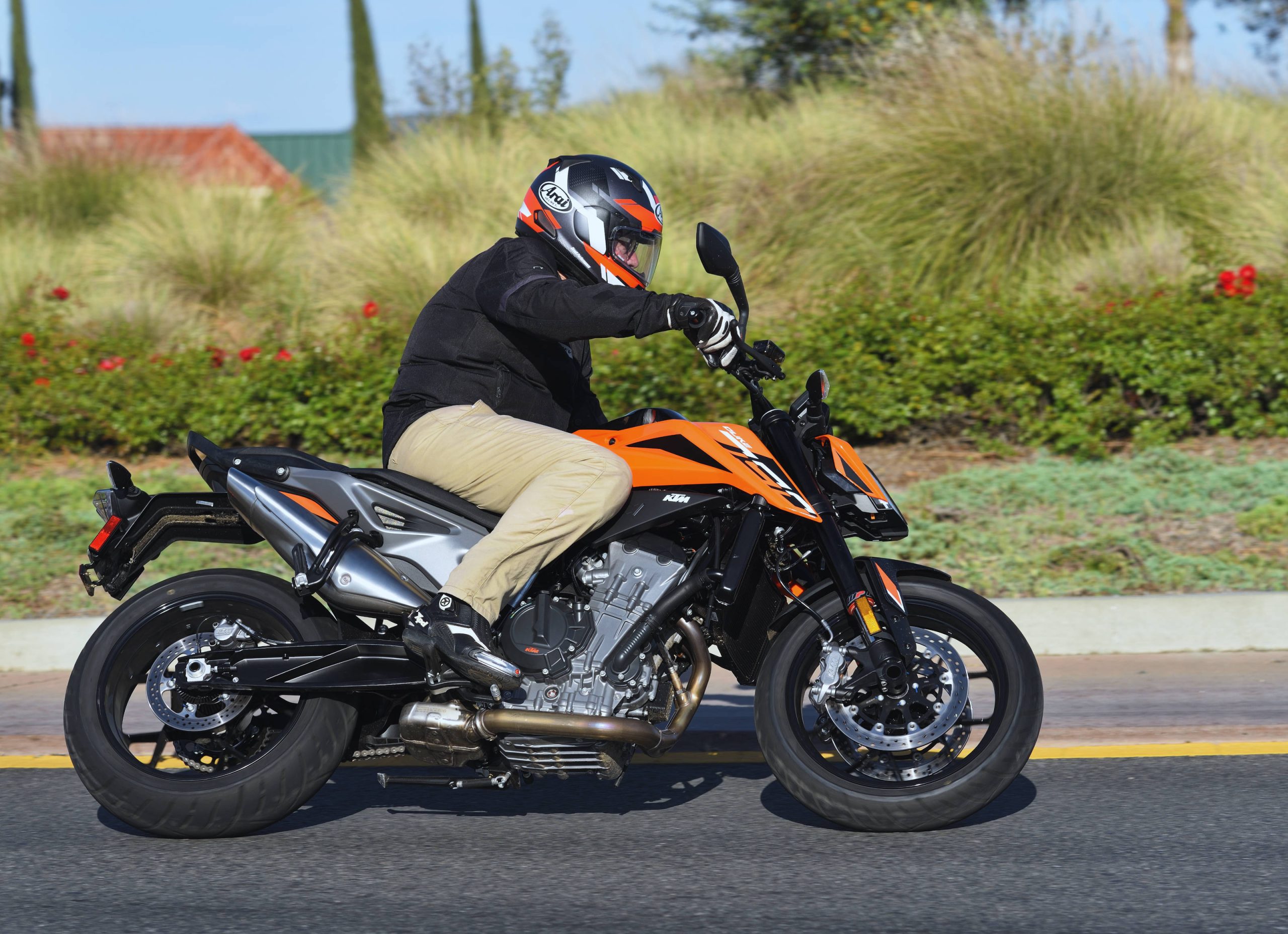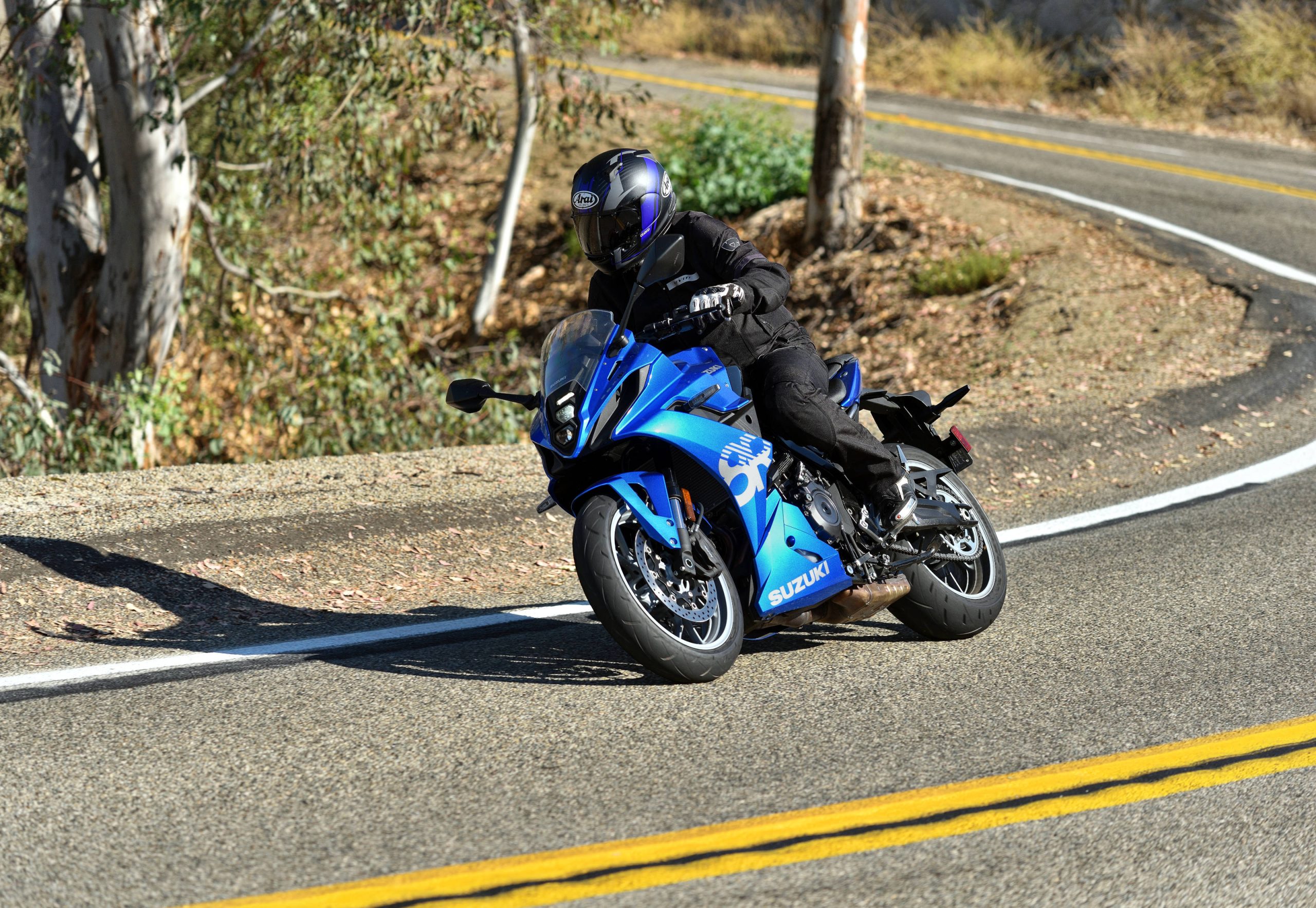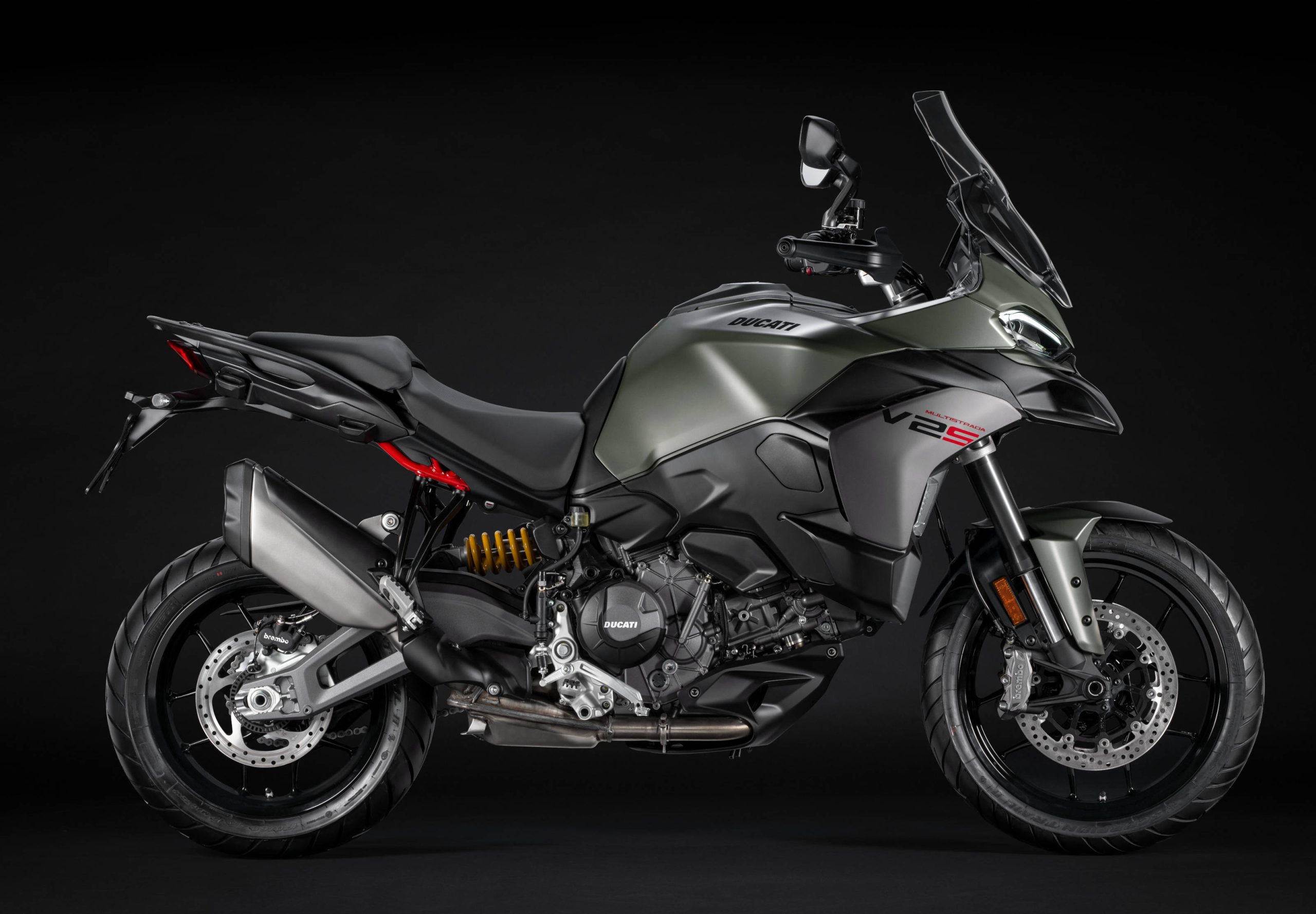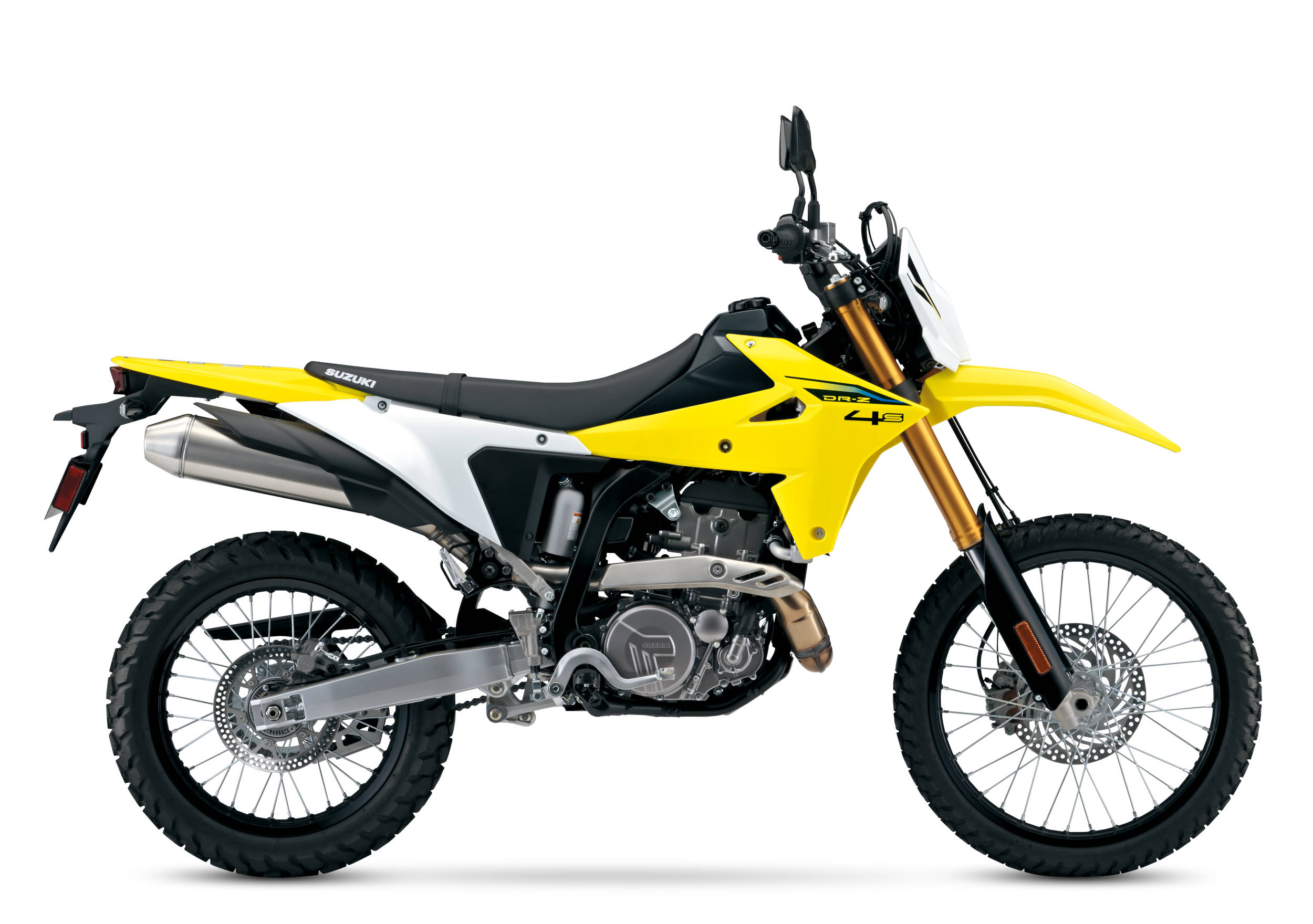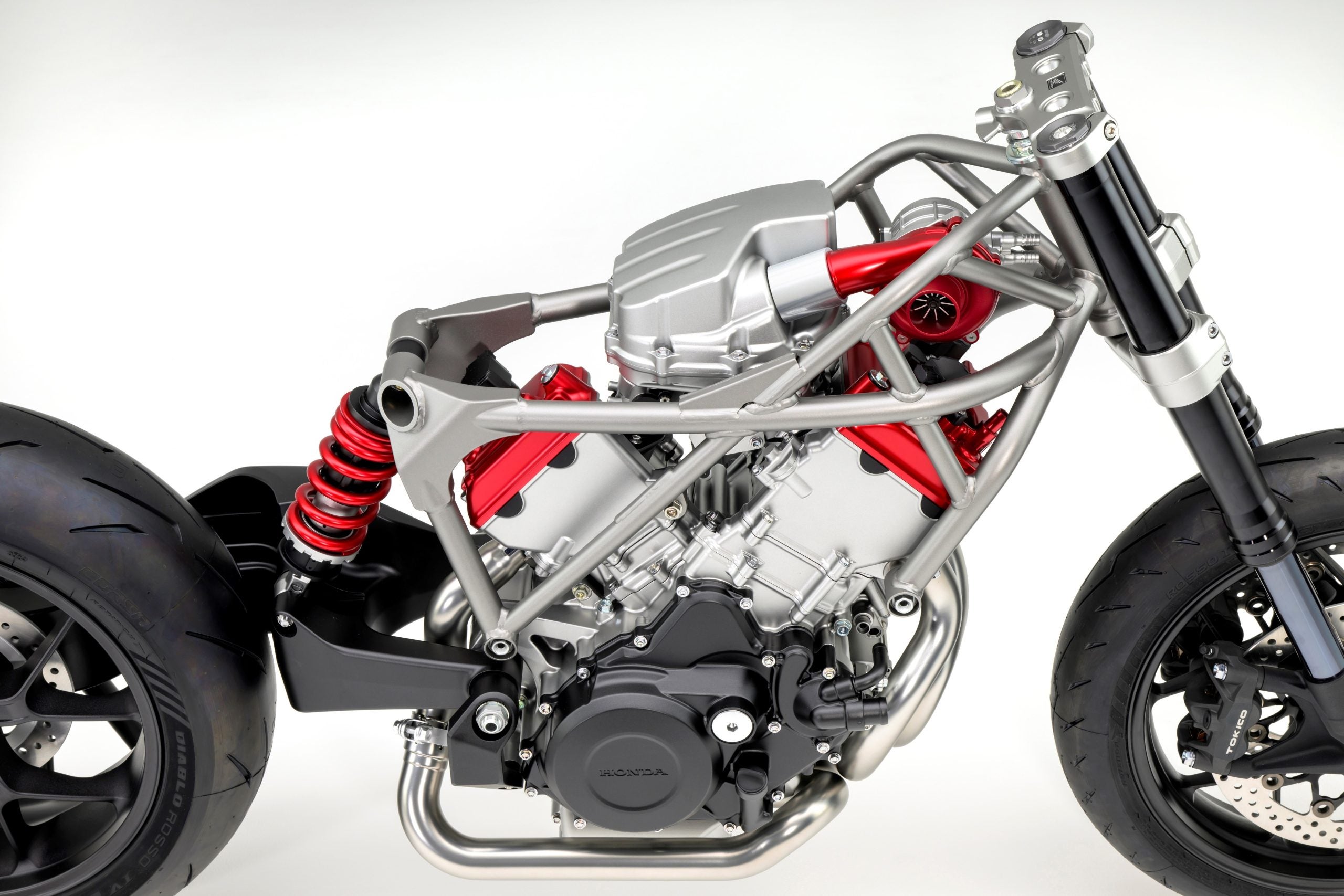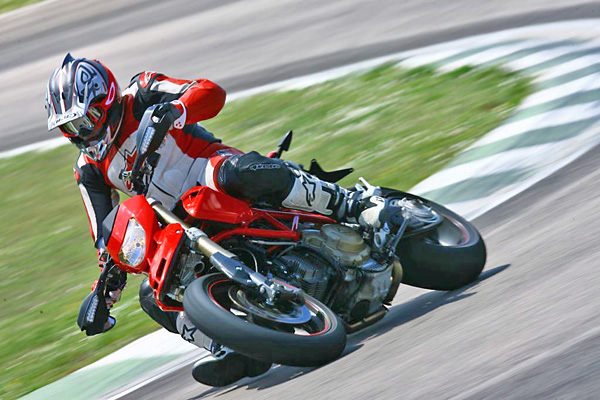
Since Ducati showed us the Hypermotard concept in Milan 2005 we have been very eager for a ride. Early May in Sardinia and we are finally in the seat of the latest motard designed fun-bike to enter the market. In hyper mode we rode the Hypermotard both on the road and on track. Is this the perfect motorcycle?
The trend that Ducati is about to define as Hypermotard started with KTM’s 950 SM. It’s a simple recipe really, take an existing 1000cc V-twin engine and add Supermoto styling and flickability to it! That’s what the new trend is all about, big displacement street supermotards. Like the Buell SuperTT and BMW HP2 Megamoto, Ducati have gone air-cooled. But the daddy itself, KTM 950 SM is liquid cooled.
Whilst KTM’s 950 SM and BMW’s HP2 SM (conversion kit with the Enduro) really are big supermoto’s with long suspension travel, racy seats and foot-controls made for cross boots, Ducati have gone street with the Hypermotard 1100. Street in Ducati terms also means sport, but the Hyper have got more in common with a roadbike than Supermoto in the handling department. The Hypermotard is basically a naked street bike disguised as a king sized supermoto. Hypercool!

Many of the parts in the engine and chassis department are shared with the Multistrada 1100. Whilst another manufacturer might have kept the rear end design to save cost and just designed a new front end, Ducati have gone all out in the design of the Hypermotard. Everything is new from the genius headlight/front fender section, instruments, hand guard/mirror/blinker, fuel tank, seat and rear section with underseat double exhaust. It’s all very true to Pierre Terblanche’s original drawings and the Hypermotard won the award for best design after the 2005 EICMA show in Milan. The only changes since the concept model are an additional brake disc up front, blinkers moved from the foldable mirrors to the hand guards and the dual silencers have shrunk! To save weight at the back Ducati has made the silencers as small as they could possibly get away with under current noise regulations. At the back Ducati has also designed the LED-light holder to double as pillion grab handles.
On the beautiful Sardinian roads, I tackled bend after bend using two different riding styles. The supermotard style with my leg out to maximise front wheel traction and allow for maximum lean angles and normal road riding style with both feet placed on the footrests. Due to the wide handlebar and brilliant seat I found it best to use the supermotard style when going fast. There was not much in it speed wise on the road, but I found it better for me and I didn’t have to hang out as much in the hair bend corners. The seat allows for good movement both forwards and backwards depending on whether you are entering or exiting a corner.
Entering a tight hair bend corner is the single most fun thing about the Hypermotard. It just doesn’t matter at which speed you enter. You can either brush off all the speed with the mega powerful double Brembo radial mounted brake callipers or just carry it through most bends. There’s limits off course to what speed can be carried through any given corner, but the Hypermotard eats corners for breakfast, lunch and dinner. The steering is extremely precise and forgiving. The leverage the wide bars give put the rider in absolute control anywhere in the corners. With heavy components over the front like double steel discs, double Brembo radial struts and a magnum 50mm USD fork from suspension specialist Marzocchi it’s a good thing you have that leverage too.

Low speed handling through town was good, but the Hyper needs more muscle than a single cylinder supermoto. The Hypermotard weighs in at a claimed 179 kilo (dry) (394 lbs.) and the engineering team told us that it was a great effort to achieve this. 179 kilo is light weight, but not lighter than the competition. For filtering past cars in town those foldable mirrors stick really far out, but it’s in the word, foldable. So when filtering past the three or four cars we encountered on our route (not much traffic in Sardinia…) I just folded the mirrors in whilst riding. After passing obstacles I just unfolded the mirrors again and they are really easy to adjust whilst on the move. One journalist reported that his mirrors kept folding in when doing motorway speeds, but the mirrors have a knob to tighten them. I found that there was a lot of vibration at speed and the mirrors become pretty useless on the motorway. The handlebar is rubber mounted, but still some vibration comes through to the exposed mirrors. The foldable option is pure genius, but both the hand guards and mirrors should be more solidly mounted to minimise vibration. Nevertheless, the vibrations are nothing compared to that of most single cylinder machine.
The suspension is on the firm side, but fully adjustable. The main issue is that Ducati have opted for normal street bike suspension and there is little travel available compared to KTM 950 SM. For city kerbs, stairs (well, you’re not allowed to anyway…) and speed bumps the same care has to be taken as on any average roadbike. The Marzocchi/Sachs combination is otherwise superb for the faster stuff on A and B roads.
Hypermotard is so much more stable at high speed than the traditional single cylinder 650cc supermoto. The 50mm USD front fork is rock solid and really allows full usage of the powerful Brembo brakes. Only the front tyre limits what you can do entering a corner. On the Hypermotard 1100, Ducati have opted for Bridgestone BT014’s in 120/70-ZR17 and 180/55-ZR17. These tyres are good enough for litre class superbikes, so expect some serious longevity from the 90bhp Hypermotard.
Hypermotard 1100 S and track version
For our two-session ride on the Mores circuit in Sardinia, Ducati had prepared some very special Hypermotard versions for us. The track kit version is based on the 1100 S that differs from the standard in having lightweight forged Marchesini wheels (this is where the 2kg weight reduction comes from) fitted with Pirelli Diablo Corsa III tyres, higher spec Marzocchi 50mm USD fork (TiN treated), Ohlins rear shock and Monoblock Brembo radial callipers. But that was not enough; we were also treated to a 2-1 race exhaust (standard 2-1-2) that releases around 5bhp, and 100 octane Shell V-power fuel. Basically, modifications to make the Hypermotard 1100S a better track bike. The single-sided exhaust was from Termignoni, of course. Termignoni also have got a 2-1-2 race exhaust replacement ready.

After watching Ruben Xaus do a couple of laps it was my time to go out and ride with the fast Spaniard. Remember, Xaus won World Superbike Race 1 in Valencia just one month ago on last year’s Ducati 999. How many times is he going to pass me, I ask myself. After a while I hoped he would pass me more so that I could watch those crazy slides into turn one! Anyway, the Hypermotard sounds great on full throttle with free exhaust. It accelerates considerably better than the standard Hyper, too.
By my third lap around the 1-minute-per-lap Mores circuit, I was ready to start pushing it a bit. Full speed down the start/finish straight into a sharp left hander. Left foot out, feed the throttle more aggressively and I felt that great sensation of leaning a supermoto-style bike. Sitting almost straight upright leaning a bike onto its very limit is just great! I was starting to trust the front Pirelli Diablo Corsa III tyre more, and it had no problems in the left hander.
Full throttle up to a left/right chicane and over the hill into a blind double right hair bend corner. Halfway in the front wheel started sliding sideways pushing me wide. Bloody hell, that right hand side of the front is neither warm enough nor scrubbed in properly yet, I thought. So it put me off for a lap, but now the tyres really were warm enough. After the double right and a short straight I could chuck the Hyper down on its left ear and open the throttle early. It surprised me that the rear wheel never spun properly up with the early throttle from full lean.
Ok, I thought, I’m not going to try to be Xaus just yet and make a fool of myself sliding into the gravel trap trying an assisted power slide. Using the throttle on full lean along with some clutch and rear brake to spin out of a corner takes every brain cell available. And I was at the Mores circuit to ride and test, not race. I could keep up with Ruben for one-and-a-half corners before he disappeared. He actually lapped me about two times every 10 minutes. After this left hander, I accelerated on full throttle down a longer short straight for a fast left hander followed by the back straight onto a long and very fast left hander that led me back onto the start/finish straight. I could see about 180km/h (112 mph) briefly on the speedo before braking hard for the first left hander again.
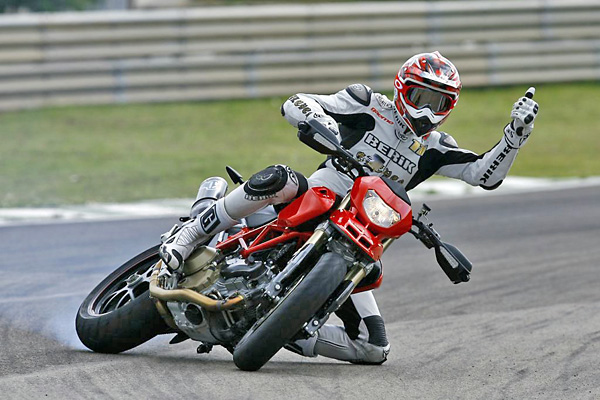
The suspension and chassis felt great on the Mores circuit. It’s by no mistake as Vittoriano Guareschi tested the final suspension set-up on the Hypermotard on this very circuit. The Hypermotard can be ridden in so many different ways around a circuit and still be fast. Supermoto style carrying a lot of corner speed sliding in, roadracing style with knee down hanging out or like Ruben Xaus that mixed the supermotard style with his own spectacular roadracing style (See picture above).
I couldn’t help but think that it was boring revving the tits out of the Hypermotard down the straights. The Hypermotard is all about cornering, fast cornering. The power band works in similar ways to a single in terms of where the action is. At 4,750rpm the torque curve peaks at 103Nm (76 lbs/ft), which is very impressive and then there’s a few thousand rpm’s wait for the maximum power output of around 95bhp at 7,750rpm. The 2-valve L-twin goes really flat on top and it’s best to just short shift up into the next gear in the six speed gearbox. The gearbox felt precise enough both on the road and on track, but there would be no need for top speed ratios at the Mores circuit.
The dry clutch and throttle have traditionally been quite heavy to operate. The new dry clutch have one extra plate that has enabled softer springs and hence a lighter pull. But the throttle is way too heavy for my taste. My right hand tired much quicker than it should. The foot controls are not really designed for offroad boots either, even though I didn’t suffer any clumsy mistakes due to my boots. I would have wanted the gear pedal higher up and further away with my Tech 10’s on. In Ducati’s accessories list are grippy foot rests rather than the rubber covered standard ones.
The fun part of riding the Hypermotard is the most important part. The 1100DS 2-valve, air-cooled L-twin has got a beautiful torque curve. This enables effortless low speed acceleration and wheelies. The turn-in is so precise and steering so easy to adjust mid-corner that anything goes. Hypermotard is forgiving enough for the new rider and fun enough for the experienced rider. The perfect motorcycle!

Conclusion
My expectations were sky high for the Hypermotard. It’s a bike close to my heart in concept and Ducati did such a great job on the design (just put a Ducati Hypermotard next to a KTM 950 SM and you’ll soon see where all the dribble goes…) So even though it’s not perfect at slow speed city handling, has got a heavy throttle and road suspension, I forgive it completely! Hypermotard has got more street credibility than Ducati’s own Monster. Better slow down the Monster line in Bologna to make way for more Hypers! I love it and yes, I would buy one tomorrow!
+
So simple, so good!
Handling, chassis and brakes (particularly on the S)
Pierre strikes back!
–
Heavy throttle tires hand
Fuzzy mirrors at high speed
Thank you to Federico Sabbioni, Hypermotard Project Engineer for the valuable technical insight.

